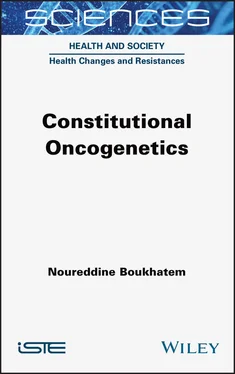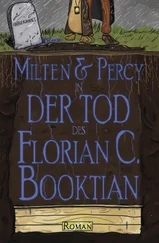7 Introduction
8 Begin Reading
9 Appendix: Summary of the Book
10 References
11 Index
12 End User License Agreement
1 v
2 ii
3 iii
4 iv
5 xvii
6 xviii
7 xix
8 xx
9 xxi
10 xxii
11 xxiii
12 xxiv
13 xxv
14 1
15 3
16 4
17 5
18 6
19 7
20 8
21 9
22 10
23 11
24 12
25 13
26 14
27 15
28 16
29 17
30 18
31 19
32 20
33 21
34 22
35 23
36 25
37 26
38 27
39 28
40 29
41 30
42 31
43 32
44 33
45 34
46 35
47 36
48 37
49 38
50 39
51 40
52 41
53 42
54 43
55 44
56 45
57 46
58 47
59 48
60 49
61 50
62 51
63 52
64 53
65 54
66 55
67 56
68 57
69 58
70 59
71 60
72 61
73 62
74 63
75 64
76 65
77 66
78 67
79 68
80 69
81 70
82 71
83 73
84 74
85 75
86 76
87 77
88 78
89 79
90 80
91 81
92 82
93 83
94 84
95 85
96 87
97 88
98 89
99 90
100 91
101 92
102 93
103 94
104 95
105 96
106 97
107 99
108 100
109 101
110 102
111 103
112 105
113 106
114 107
115 108
116 109
117 111
118 112
119 113
120 114
121 115
122 116
123 117
124 118
125 119
126 121
127 122
128 123
129 124
130 125
131 127
132 128
133 129
134 130
135 131
136 132
137 133
138 135
139 136
140 137
141 139
142 140
143 141
144 142
145 143
146 144
147 145
148 147
149 148
150 149
151 151
152 152
153 153
154 155
155 156
156 157
157 158
158 159
159 161
160 162
161 163
162 165
163 166
164 167
165 168
166 169
167 171
168 172
169 173
170 174
171 175
172 176
173 177
174 178
175 179
176 180
177 181
178 182
179 183
180 185
181 186
182 187
183 188
184 189
185 191
186 192
187 193
188 195
189 196
190 197
191 199
192 200
193 201
194 202
195 203
196 204
197 205
198 206
199 207
200 208
201 209
202 210
203 211
204 212
205 213
206 214
207 215
208 216
209 217
210 218
211 219
212 220
213 221
214 222
215 223
216 224
217 225
218 226
219 227
220 228
221 229
222 230
223 231
224 232
225 233
226 234
227 235
228 236
229 237
230 238
231 239
232 240
233 241
234 242
235 243
236 245
237 246
238 247
239 248
240 249
241 250
242 251
243 252
244 253
To my colleagues and friends from the oncogenetics centers from whom I have learned so much:
Prof. Yves-Jean Bignon and his team, Centre Jean-Perrin, Clermont-Ferrand;
Dr. Olivier Caron and his team, Institut Gustave Roussy, Paris;
Dr. Dominique Stoppa Lyonnet,
Dr. Chrystelle Colas and
Dr. Emmanuelle Fourme, Institut Curie, Paris
SCIENCES
Health and Society , Field Director – Bruno Salgues
Health Changes and Resistances , Subject Head – Bruno Salgues
Constitutional Oncogenetics
Noureddine Boukhatem

First published 2021 in Great Britain and the United States by ISTE Ltd and John Wiley & Sons, Inc.
Apart from any fair dealing for the purposes of research or private study, or criticism or review, as permitted under the Copyright, Designs and Patents Act 1988, this publication may only be reproduced, stored or transmitted, in any form or by any means, with the prior permission in writing of the publishers, or in the case of reprographic reproduction in accordance with the terms and licenses issued by the CLA. Enquiries concerning reproduction outside these terms should be sent to the publishers at the undermentioned address:
ISTE Ltd
27-37 St George’s Road
London SW19 4EU
UK
www.iste.co.uk
John Wiley & Sons, Inc.
111 River Street
Hoboken, NJ 07030
USA
www.wiley.com
© ISTE Ltd 2021
The rights of Noureddine Boukhatem to be identified as the author of this work have been asserted by him in accordance with the Copyright, Designs and Patents Act 1988.
Library of Congress Control Number: 2020946632
British Library Cataloguing-in-Publication Data
A CIP record for this book is available from the British Library
ISBN 978-1-78945-016-3
ERC code:
LS2 Genetics, ‘Omics’, Bioinformatics and Systems Biology
LS2_5 Epigenetics and gene regulation
LS7 Applied Medical Technologies, Diagnostics, Therapies and Public Health
LS7_2 Genetic tools for medical diagnosis
I know Professor Noureddine Boukhatem from Mohamed I University in Morocco well, and I have been able to appreciate during his visits, since 2017, to my oncogenetics department at the Centre Jean-Perrin in Clermont-Ferrand his human qualities, his commitment and his enthusiasm for oncogenetics. A “Tour de France” of major oncogenetic consultations has enabled him to have an informed and multidisciplinary view of modern oncogenetics.
Oncogenetics is defined as the management of families presenting a suspected hereditary risk of cancer, which is considered to be the cancer risk factor with by far the highest predictive value. The discovery of the first hereditary cancer risk genes in the late 1980s (TP53 and RB1 genes) provided doctors with a diagnostic tool that was essential to the practice of oncogenetics. The high predictive value of these genetic tests enables the physician to implement screening measures for individuals and families at high risk of cancer in order to improve the prognosis when cancer occurs, but also to implement preventive measures for high-risk cancers whenever possible in order to reduce their incidence.
Oncogenetics came into existence about 30 years ago in a few countries, including France, which in 1991 created the Génétique et Cancer (Genetics and Cancer) group, which structured the national organization of oncogenetics through the implementation of the first consultations in Clermont-Ferrand, then in Lyon and then in Paris. It was not until 2002–2003 that the first cancer plan led to the creation of the Institut national du cancer (French National Cancer Institute), which then officially supported oncogenetic activities, first in the molecular diagnosis laboratory, then in consultation and then in the monitoring of people at high risk of cancer. From this support, a territorial network was set up to provide effective care for families at high risk of cancer. France has thus become a model of organization at the national level of oncogenetics.
Oncogenetics has developed mainly in Europe and North America. Unfortunately, this discipline remains elementary or reserved for a fortuitous and educated elite in many countries, particularly in Asia and Africa. This is why Professor Noureddine Boukhatem’s approach to writing a book on oncogenetics is valuable and useful for the medical community. He has produced an encyclopedic work with a concise presentation and an extensive bibliography, highly useful as a reference. This work is thus strongly recommended for oncogenetic doctors or students who are going to practice medical genetics.
Читать дальше













